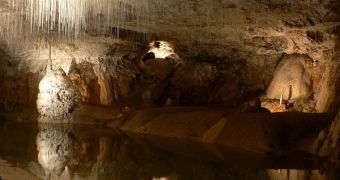Stalactites, the beautiful structures that adorn the roof of some caves, appear to be regulated in their growth process by a phenomenon known as “cave breathing.” The discovery, which was only recently made, has serious implications, because it throws doubt on ancient climate models, which partially rely on data collected from these structures. Until now, they were thought to only be influenced by dripping water from a cave's ceiling, but this turns out to be the incomplete picture, NewScientist reports.
According to the group of researchers that conducted the new investigations, cave breathing is absolutely essential to the formation of these wonderful structures. They take thousands of years to grow, as in to slowly accumulate from ceilings and begin their long descent. They are formed out of calcium carbonate deposits, which, in collaboration with other minerals, create this type of dripstone. They are mostly indigenous to limestone caves, where these minerals are abundant, geologists say.
In the new investigation, Florida State University in Tallahassee experts, led by scientist Philip Froelich, traced the levels of the naturally occurring, radioactive gas known as radon. The base of scientific operations was set in the Hollow Ridge cave, near Marianna. The researchers used specialized equipment to keep track of the airborne gas during both summer and winter, and made some fairly interesting discoveries. They found that the gas was only available in very low levels during the winter, but increased substantially in the summertime.
This was largely due to the fact that, during the winter, cold, moist air entered the cave from the exterior, forcing the warmer, radon-filled air outside and thus reducing concentrations. Therefore, during the summer, the precipitation of calcium carbonate, the main material inside stalactites, is hindered by the gas. During this chemical reaction, the experts add, carbon dioxide is produced in large quantities, and, as soon as the gas' levels increase above a certain threshold, the mineral precipitation process is interrupted. “If caves don't breathe they don't produce stalagmites,” Froelich concludes.

 14 DAY TRIAL //
14 DAY TRIAL //